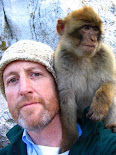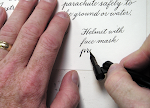"Flower Painting in the Wild" is now available, and today only it's 10% off
Buy now
(scroll down for more links). Here's what the reviewers are saying:
“Who doesn't love to sit in a garden? Translucent and highly chromatic, flowers are the most challenging subjects to render in the studio. Put them in a mass outdoors in flickering light, moving in a gentle breeze...even the most accomplished plein air painter will head for the hills instead. James Gurney takes you with him to observe and paint on a larger panel as well as his iconic sketchbook pages. Practical, erudite and charming, James shows you how he integrates that devilish chartreuse leaf green into his impressionistic paintings of flowers on site. Watch him create a formally satisfying composition while only selecting details that are botanically relevant. He also puts it all in philosophical context, quoting Ruskin no less, that urges you to go outside to smell, see and paint the roses!”
—
Elissa Gore, Landscape Painting Instructor, New York Botanical Garden
"Set at the New York Botanical Gardens, you get to see how an artist tackles the complexity of nature. With shifting light, wind blowing and pedestrians passing by Gurney does an elegant painting. Taking the time to see the structure of the flower, Gurney develops the painting to a high level of finish. The combination of his ability to understand solid depictions of light and form as well as structure and brush handling, make this video a joy to watch for every level of artist. Whether you are just starting out or have mastered your own technique, to behold a fresh alla prima painting in plein air is a treat for any artist. Gurney filmed the video himself which gives it a raw, personal touch. I highly recommend it and look forward to viewing others in the future.”
—
Michael Klein, East Oaks Studio
"With this DVD James Gurney provides the viewer an excellent opportunity to learn about flower painting in a natural setting while paying keen attention to different shapes and light, general value and color in nature, and how to bring them all together in a finished painting. He demonstrates not only the painting techniques but gives also information about the surrounding environment and how to engage with the public while painting. Gurney is a master at explaining how to handle clustered masses of plant parts, without absolute delineation of detail so that one’s mind is inspired to build the final picture."
—
Mervi Hjelmroos-Koski, Ph.D., D.Sc., Manager of School of Botanical Art & Illustration, Denver Botanic Gardens

















